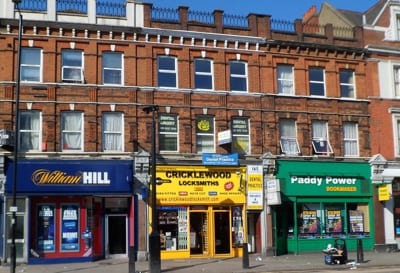
As a profession, bookmaking can be dated back to the days of Ancient Rome, when it was common for people to bet on the outcome of a chariot race or gladiatorial matchup. Yet the practice didn’t really stand the test of time, only being revitalised in a big way in England during the eighteenth century. The first bookmaker of the modern era was one by the name of Harry Ogden, who opened up a pitch at Newmarket Racecourse in 1795. Soon similar ventures began to spring up all around the country, becoming such a problem for the government that a new law needed to be created to control it. The result was the Gaming Act of 1845, which outlawed bookmakers everywhere but at race tracks.
The law didn’t do a huge amount to curtail the new businesses, however. Illegal bookmakers continued to operate around the country, being fined when they were discovered but also seeing the police turn a blind-eye to their operations in certain circumstances. Eventually the Conservative government of Harold Macmillan introduced the Betting & Gaming Act of 1960, which legalised betting shops on Britain’s streets. Even then, they weren’t particular pleasant environments, intentionally designed to put people off entering them. Yet as the years went by, the laws surrounding bookmakers and betting became more and more relaxed, leading to the industry that we know and love to hate today.
The First Shops Arrive on the High Street
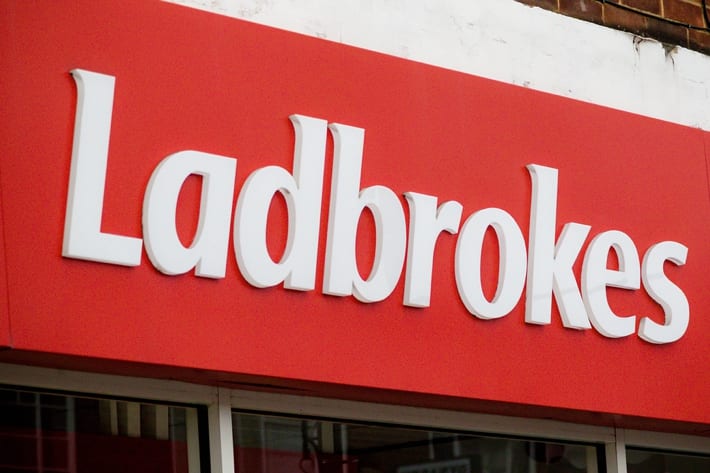
The new law introduced by the 1960 Betting & Gaming Act came into effect on the first of May in 1961, leading to betting shops opening at a rate of one hundred every week. By the end of the first year, it was estimated that as many as ten thousand had opened up across the UK.
Whilst it’s not known exactly which shops were the first to open their doors, by the time the 1970s was coming towards its zenith, more than fifteen thousand betting shops had began taking business throughout the country. With other acts introduced in the 1960s, giving rise to different forms of gambling like bingo halls and casinos, a decision was taken to put forward another Gambling Act in 1970 to consolidate control of the gambling industry under the Gaming Board.
Here we’ll look at the various bookmakers that had been around before the new laws were introduced and then took control of the industry once they were allowed to operate on the high street, focusing on the ones that are still around today.
Ladbrokes
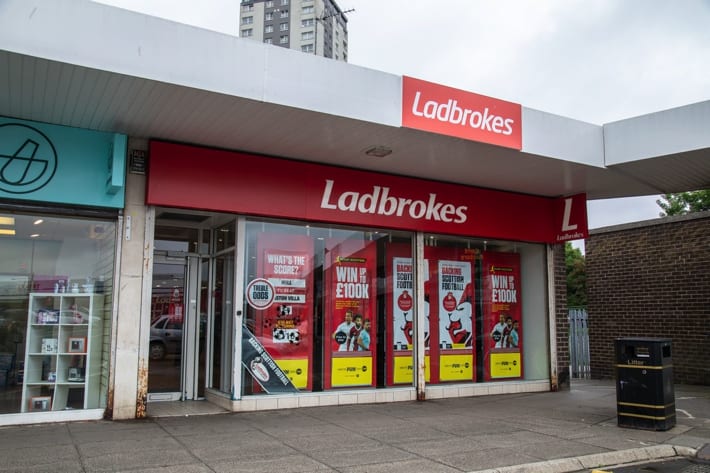
In 1886, Messrs. Schwind and Pennington decided to create a business that would act as commission agents for horses that had been trained at Warwickshire’s Ladbroke Hall. In 1902, they were joined in the enterprise by Arthur Bendir, with the name of the operation being changed to Ladbrokes as they moved to London. They took offices in the Strand, moving to Hanover Square in 1906 and then Mayfair seven years later.
During the more formative years of the company’s time in London, they were exclusively available to members of the British aristocracy and upper class, taking many of their clients from the gentlemen’s clubs that existed in the St. James’s area of London. The reason that they targeted that particular audience was that those of ‘noble blood’ were the only ones entitled to place bets for the purpose of entertainment the need to aim their business at those whose titles began with Duke, Marquis, Earl, Viscount or Baron was clear.
Helen Vernet & the Post-War Downturn
One of the unique aspects of Ladbrokes in the early days was the presence of Helen Vernet as their on-course representative. She joined the company in 1919 and was one of the only female representatives of betting firms who found themselves working on British racecourses. Her experience and ability was such that she was made a partner in 1928 and remained with the company until her death at the age of 80 in 1956.
Not even the alluring presence of Vernet could help Ladbrokes avoid the downturn that came the company’s way in the wake of the Second World War, largely because of the policy of austerity that was introduced and an ever-decreasing client base. Even so, the company was reluctant to change its approach, believing that the manner it had worked in for decades would stand it in good stead.
The Steins Take Over
Despite the desire of the company to keep working in the same way, it was soon clear that it wasn’t sustainable. In 1956, Ladbrokes was acquired by Mark Stein along with his nephew, Cyril, who spent an alleged £100,000 buying it. The timing couldn’t have been better, with the legalisation of betting shops five years later allowing the Steins to expand the company in a big way, using money from other parts of the business to acquire shops around the capital.
The legalisation of betting shops didn’t just allow for the likes of Ladbrokes to take to the high street, however, so they needed something different to win customers from the other companies that began to spring up. That’s when Stein came up with the idea of fixed odds betting on football fixtures, which proved to be immensely popular. They also chose to diversify away from betting by taking on a major stake in a casino and hotel called the Dragonara Palace in Malta when it opened its doors in 1964.
The Business Grows
Perhaps the biggest moment in the history of Ladbrokes came about in 1967 when the decision was taken to float it on the London Stock Exchange. Over the following six years, the business grew exponentially, seeing the fifty or so shops that were open at the time of the float expanding to more than one thousand. Soon the expansion increased in other areas of the industry, with bingo clubs, casinos, hotels and even real estate investments becoming common place for Ladbrokes.
Another major move came about in 1975 when Ladbrokes purchased Lingfield Park, following it up by buying Perry Barr Stadium and Totalisators and Greyhound Holdings the following year. That saw the properties that the company owned increase to include six greyhound racing venues, with Arthur Aldridge from the Greyhound Racing Association joining the company as Racing Director. A far cry from the commission agents that had first begun operating less than a hundred years earlier.
Coral
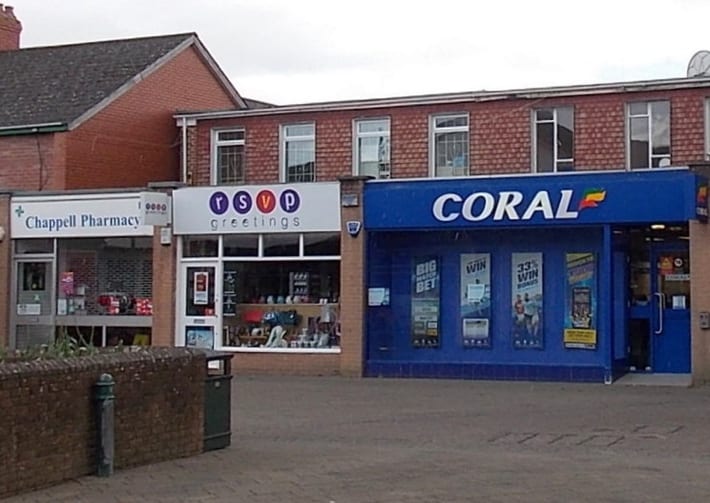
In the wake of the First World War, the Kagarlitski family emigrated from Poland to England, with Joseph Kagarlitski being one member of the family. Boasting a talent for mathematics, he changed his name to Joe Coral and left school at the age of 14 in order to work as a pay clerk for a lamp manufacturing company. It was whilst working there that he came into contact with a couple of bookmakers who recognised his potential and began to take him under their wing.
He soon began working as a bookmaker’s runner, collecting bets on their behalf and learning the business as he did so. Soon he left the lamp manufacturers and started to dream of setting up business on his own, taking bets from players at a Stoke Newington billiards hall. Before long, he had a legal pitch of his own, operating trackside at Harringey and White City greyhound stadiums. The Coral business had been formed.
The Business Takes Root
Soon enough, Coral’s new venture began to expand, with around 70 runners working for him, taking bets from the shops and pubs across his patch of London. Not everything that he did was legal at the time, but he skirted the law gracefully and was able to avoid getting into any major trouble. At the time, everyone associated with the world of betting and gambling knew that it needed to be legitimised in order to see it grow and expand properly.
Coral took on a business partner in the form of Tom Bradbury-Pratt and the pair began to run speedway meetings at Harringay before opening a credit office in London’s West End in 1943. It didn’t take long for them to grow that side of their burgeoning business, setting up greying pitches at both Clapton Stadium and Walthamstow Stadium, eventually deciding to open some betting offices.
Coral Grows as the Law Changes
The gradual but steady growth of Coral’s business meant that when the law changed in 1961, he was perfectly placed to take advantage of it. Unlike plenty of his competitors, Coral had ensured that he had the financial clout to be able to ‘go straight’ by setting up premises and being able to pay his staff. He opened his first shop in 1961 and it didn’t take long before more began to spring up around London.
By taking a policy of offering value and being willing to lay large commissions Coral’s business began to earn a reputation as being one of the best bookies available. Soon his shops began to attract more and more business, allowing it to grow and set up as a limited company in 1963, moving into bingo halls, casinos and even hotels in the years that followed. In many ways, Joe Coral’s genius was about keeping ahead of the trend and knowing that the industry would grow beyond simple sports betting.
Further Expansion Beckons
The 1970s was a period of further expansion for Coral’s business, with the company choosing to merge with another bookmaker called Mark Lane in 1971. Further growth during the rest of the decade, as well as the diversification that had become a key facet of the expansion, led to the company becoming the Coral Leisure Group in 1979, yet it was what was to happen at the start of the 1980s that would lay the groundwork for the company in the modern era.
In 1981, the Coral Group was bought out by Bass plc, becoming part of the larger Bass Leisure group. Joe Coral was kept on the firm’s President and the company was allowed to operate as a separate entity, keeping its name, with the company continuing its growth to the extent that it soon became one of the country’s biggest bookmakers. Joe Coral himself passed away in 1996, but not before he’d seen his company grow to be one of the so-called ‘big four’ of British bookies.
William Hill
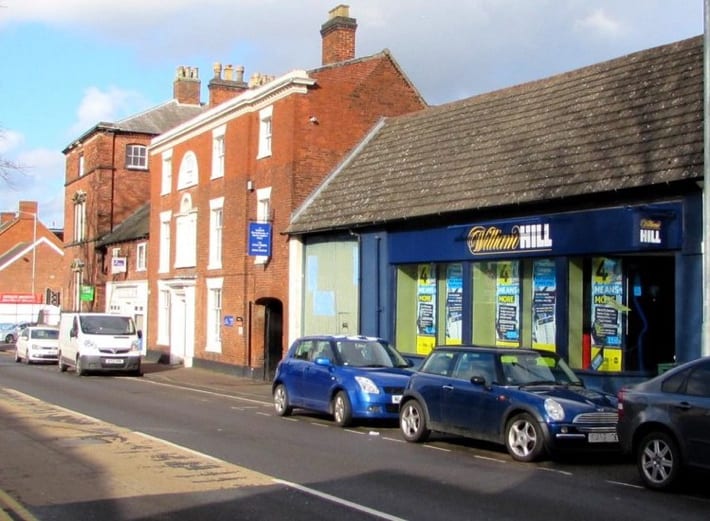
William Hill was born on the 16th of July in 1903 in Birmingham, being the second born of a remarkable thirteen children. He left school at the age of twelve and began work on his uncle’s farm, soon moving on to work for BSA Works in the city. When he was sixteen, he lied about how old he was in order to join the Black & Tans, being stationed in County Cork, Ireland. Having developed a taste for horse racing at a young age, Hill began taking bets from Moss Foley’s pub in the town.
When he returned to England, Hill decided to set up a legal betting firm, gaining a pitch at the Birmingham tracks in 1925. It was a short-lived experience for him, failing to lay some large bets and quickly losing all of his capital. In 1929, he decided that a change of location might work in his favour, moving to London and taking bets on greyhound races, building up more capital to give him the ability to become an investor and part owner of Northolt Park Racetrack.
The Company Is Formed
Soon Hill was making enough money to mean that he was able to expand, opening a betting shop in London’s Park Lane in 1934. Whilst bookmakers were still illegal when it came to cash betting, William Hill spotted a loophole that meant that people could legally place ‘credit only’ bets. As a result, he took cheques from punters weeks in advance of them wanting to place bets, cashing them only after the race had taken place. This allowed the company to stay on the right side of the law.
It didn’t take long for William Hill to earn a reputation as an honest bookie, largely because not all of his competitors could boast the same thing. The fact that bookmaking was illegal at the time meant that bets would regularly not be paid out on by some of the more nefarious operators, but that wasn’t William Hill’s way and his popularity grew as a result. He dabbled in ownership of greyhounds himself, seeing the joint-owned Lone Keel win the English Greyhound Derby in 1938, proving that the world of gambling was in his blood.
Fixed-Odds Football Betting & the Business Turning Legit
Whilst Ladbrokes officially goes down as the company that invented fixed-odds football betting, it is believed by some that it was actually William Hill’s idea. He produced the first ever coupon for it in 1944. The difference was that William Hill was still a credit bookmaker at the time, whereas Ladbrokes became a UK-licensed bookie before him and therefore claim the credit. In the 1960s, Hill successfully sued Ladbrokes for copying his ticket, but he only asked for £1, plus costs in payment.
The biggest move for the company in helping it become the behemoth that it is today occurred in 1954 when Hill moved the business into the shell company named Holder’s Investment Trust. This allowed the bookmaker to become the first one that was publicly listed on the London Stock Exchange, with Hill selling some of his shares between 1955 and 1961, raising around £5 million for himself in the process. He put the money towards continuing to raise and breed horses.
Hill Refuses to Open High Street Shops
Despite being a successful businessman, William Hill was not as money-hungry as some of his competitors and when the law changed in 1961 to allow bookmakers to have shops on the high street, he refused to take advantage. In fact, Hill was actually a fierce opponent to the legalisation of betting shops, calling them a cancer on society. As a socialist, he believed that they preyed on working class people and should only be a form of entertainment for those that could afford to use them.
As the 1960s developed, however, even the more traditional bookmakers realised that betting shops were the way forward. The industry had spread throughout the United Kingdom and Hill realised that if he didn’t adapt, then his business was at risk of dying out. As a result he changed his stance in 1966, beginning to create the empire of bookie’s shops that we know today. Whether this abandonment of his principles began to eat away at him or not we’ll never know, but he retired from running the business in 1970 and died the following year at the age of 68.
Victor Chandler
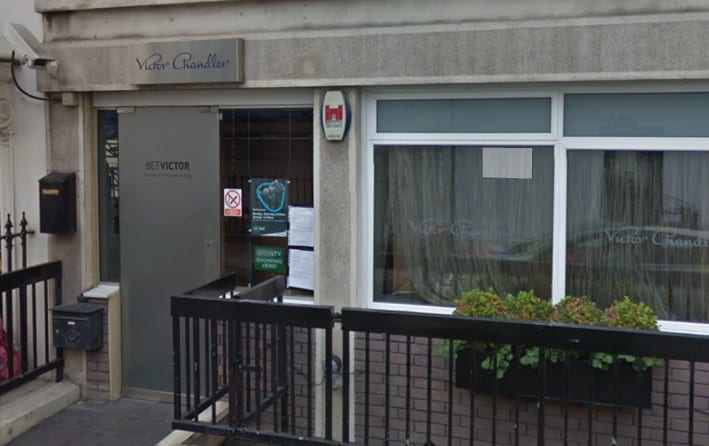
William George Chandler was born in the Hoxton area of London on the 30th of November 1880. He soon developed a penchant for bookmaking and became the leading pitch owner at White City Greyhounds at White City Stadium. Not a huge amount is known about Chandler during the more formative years of his company’s existence, with rumours of an illegal betting company being started by him in the 1920s being rife.
What we do know is that he was a director and shareholder in Hackney Wick Greyhound Track, but he sold his shared in 1930 in order to buy an unlicensed greyhound track known as Crooked Billet. He then went on to develop the track over the following three years, re-opening it in 1933 as Walthamstow Greyhound Stadium. That was seven years after Belle Vue in Manchester had first hosted greyhound racing, so it was instantly popular.
The Bookmaking Business Is Opened
William Chandler founded the bookmaking arm of his business in 1946, just months before he died. After his death, the running of Walthamstow Stadium was passed over to his sons, Charles and Percy, whilst Victor and Jack took over the bookmakers, with his fifth son, Ronnie, going on to train greyhounds. When the law changed to allow brick and mortar betting shops to open in 1961, the sons took their time deciding if it was right for them, opening their first shop in 1963.
Soon the shops began to spread throughout the south of England, though it didn’t grow anything like as quickly as some of the other bookies offering their services. In 1974, Victor Chandler died suddenly, leading to his son, Victor Chandler Junior, taking over the running of the operation. A colourful character who had been working in the hotel industry in Spain until that point, Chandler Junior was a serious a businessman who did his best to grow the brand as much as possible, giving it the name of Victor Chandler.
The Move Overseas
Unquestionably the biggest change to the Victor Chandler business came about in 1998, but it was a change that was so influential that it arguably affected the entire bookmaking industry. Unhappy at the high level of Gambling Tax he was being forced to pay, Chandler moved the entire enterprise overseas in order to avoid having to pay said tax. It was a move that was controversial at the time but soon most other companies were following suit.
Many believed that the move from Victor Chandler, which paved the way for most British bookmakers to also move their companies overseas, was a big part of the reason why Gordon Brown changed the gambling tax rules in 2001. Whilst it might have been a market leader in many ways, the company remained uncomfortable in its own skin and tried out several rebrands, such as become VC Bet, before finally settling in BetVictor, the company that we know today.
Betfred
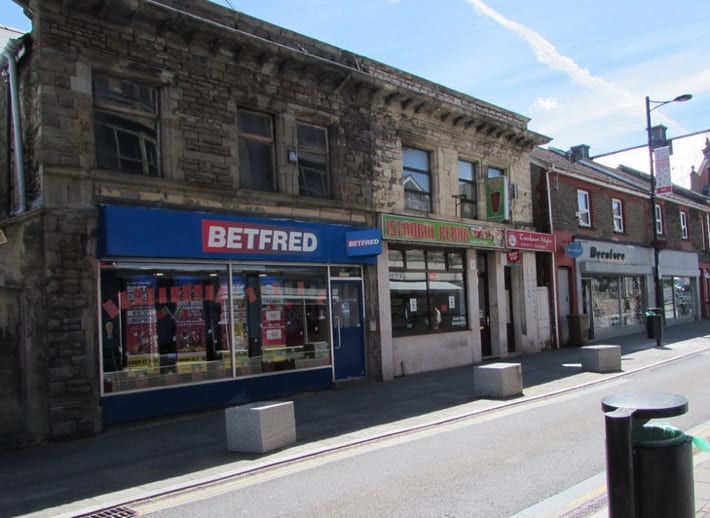
Whilst all of the bookmakers on this list have an interesting history, perhaps none are so intrinsically tied into the world of betting in the same was as Betfred is. The company was set up by brothers, Fred and Peter Done, in the Ordsall area of Salford, greater Manchester in 1967. That is nothing special in and of itself, but they managed to open the shop courtesy of money that they had won placing a bet on England to win the World Cup in 1966.
Coming to the party five years after most other bookmakers had established their brand and six years after latecomers, such as William Hill, had opened the doors to high street shops for the first time, Done realised that he’d have to do something special to attract punters into his establishment. He therefore decided to forego the usual sawdust and spit environment that older bookies maintained, instead putting carpet in, offering free hot drinks and calling his customers ‘sir’.
The Company Grows by Being Different
It was a tactic that worked, with the company opening its second shop within two years. In the decades that followed, Fred Done continued to offer something different, buying up competitors and growing his firm steadily but surely. In 1997, he bought out the Robert Walker chain of shops, taking the company’s total number of premises to one hundred, doubling that number over the three years that followed. Known as Done Bookmakers at the time, the company finally opened its first shop in the nation’s capital in 2002.
Perhaps the wisest move from the Dones came in 2004 when they chose to rebrand as Betfred, alongside the launch of an online enterprise. Betfred.com added the likes of online bingo, poker and virtual sports to the list of things that customers could bet on via the online portal, meaning that the company’s growth continued apace. With more than five hundred shops on offer, Betfred hit the headlines in November of 2004 when a customer in their Salford branch picked six winners on the Tote Scoop6 and became the first person to become a betting shop millionaire.
Betfred Wins the Tote
Having been looked at as a potential business ripe for takeover by some of the biggest names in the betting industry in the years before, Betfred’s expansion grew to such an extent that in June of 2011 the company won the tender to buy the Tote from the British government. It allowed Betfred complete control over on-course totalisator betting systems until 2018.
Many in the horse racing industry believed that Done didn’t have the best interests of the sport at heart and instead simply wanted to get his hands on the shops that the Tote had on the high street. It’s easy to understand the skepticism, given that by July of 2017 Betfred boasted more than one and a half thousands shops, as well as fifty-one on-course bookmaker venues. All because they brothers had faith in the England team back in 1966.
The Tote
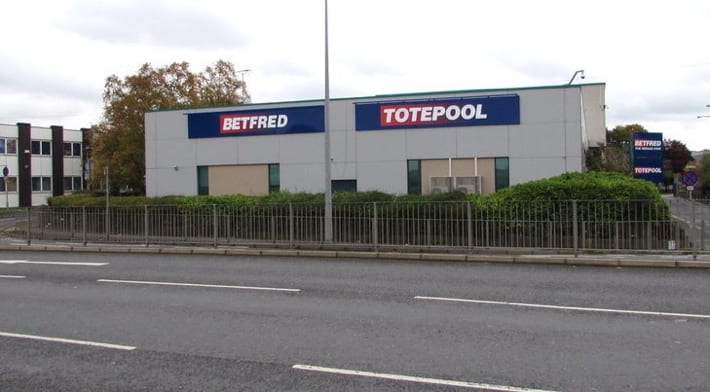
The Racecourse Betting Act of 1928 led to the creation of the Racehorse Betting Control Board, which was government appointed and set up by none other than Winston Churchill. The idea behind it was to provide a state-controlled alternative to the off-course bookmakers that were unsafe and illegal. It was created with the aim of putting some money from gambling back into the sport of horse racing, with the first bets taken at the race meetings at Newmarket and Carlisle on the second of July 1929.
In 1930, Tote Investors Limited was set up as an independent company with the aim of channeling off-course bets and credit bets into the Tote pool. When the Betting Levy Act came into effect in 1961 the board was rejigged and became the Horserace Totalisator Board, with a new job of redistributing the funds raised to the Horserace Betting Levy Board. Known as the Tote, the company opened its first high street shop in 1972.
The Tote Starts to Grow
Though other bookmakers had been allowed to open shops on the high street from 1961, the Tote had different rules and wasn’t allowed to do so until the restrictions put on it 1972. Even so, it remained popular with punters and so when the shops began to spring up around the country they had no problem attracting customers. Soon the Tote began to offer other markets than just horse racing, with the bookmaker arm of the company launched in 1973.
The company’s popularity continued to grow in the decade or so that followed, with its high street presence combined with the fact that it was on most racecourse around the country meaning that it quickly became one of the biggest bookmakers in the country. In 1992, a deal was struck with the other high street bookies to mean that they could take bets that would be paid into the Tote pool. The other bookmakers didn’t mind as they didn’t offer pool betting and could instead take a small percentage of the bets and make more money.
The Tote Gets Sold
Despite the fact that the Tote had grown to become one of the biggest bookmakers in the world by the end of the 1990s, there had long been a call to privatise the company. It was an attractive proposition by that point, too. A deal with Channel 4 had seen the broadcaster team up with the bookmaker to offer its odds on their coverage, with new bets, such as the Scoop6 being invented to drive business. Even so, attempts had been made to sell the Tote as early as 1989 and then in 2004 the Horserace Betting and Olympic Lottery Act allowed the Tote to become a limited company.
There were attempts to sell it virtually every year after that, but the government had enforced rules, such as the need for it to be bought without private equity involved and that limited the ability to make the sale happen. These rules were eventually relaxed in 2011 and eighteen different bidders made attempts to buy it. In the end, it was Betfred that won the tender in a deal believed to be worth £265 million. Having turned down an offer of £400 million four years earlier, the government eventually had to settle for less because of the financial crash.